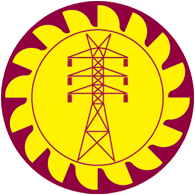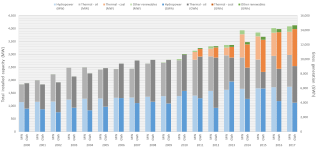| Kankesanthurai Power Station | |
|---|---|
| Country | Sri Lanka |
| Location | Kankesanthurai |
| Coordinates | 9°48′40″N80°02′07″E / 9.8111°N 80.0353°E |
| Status | Decommissioned |
| Construction began | 1996 |
| Commission date | 4 November 1998 |
| Decommission date | 2009 |
| Operator(s) | Koolair Ventures Power |
| Thermal power station | |
| Primary fuel | Fuel oil |
| Power generation | |
| Nameplate capacity | 19.4 MW |
| Annual net output | 56 GWh (2005) |
The Kankesanthurai Power Station (also commonly referred to as the Koolair Power Station) was a fuel oil-run thermal power station which was commissioned as part of the urgent plan by the Ceylon Electricity Board to overcome the 1990s power crisis. Construction of the power station began in August 1998, and the power station was commissioned three months later on 4 November 1998 in Kankesanthurai, in the Jaffna Peninsula of Sri Lanka. It was the biggest power station in the Jaffna region, at that time.

Fuel oil is a fraction obtained from petroleum distillation, either as a distillate or a residue. In general terms, fuel oil is any liquid fuel that is burned in a furnace or boiler for the generation of heat or used in an engine for the generation of power, except oils having a flash point of approximately 42 °C (108 °F) and oils burned in cotton or wool-wick burners. Fuel oil is made of long hydrocarbon chains, particularly alkanes, cycloalkanes, and aromatics. The term fuel oil is also used in a stricter sense to refer only to the heaviest commercial fuel that can be obtained from crude oil, i.e., heavier than gasoline and naphtha.

The Ceylon Electricity Board - CEB, is the largest electricity company in Sri Lanka. With a market share of nearly 100%, it controls all major functions of electricity generation, transmission, distribution and retailing in Sri Lanka. It is one of the only two on-grid electricity companies in the country; the other being Lanka Electricity Company (LECO). The company earned approximately LKR 204.7 billion in 2014, with a total of nearly 5.42 million consumer accounts. It is a government owned and controlled utility of Sri Lanka that takes care of the general energy facilities of the island. The Ministry of Power and Energy is the responsible ministry above the CEB. Ceylon Electricity Board (CEB), established by an CEB Act No. 17 of 1969, is under legal obligation to develop and maintain an efficient, coordinated and economical system of Electricity supply in accordance with any Licenses issue

Kankesanthurai, colloquially known as KKS, is a port suburb, fishing division and resort hub of the Jaffna District, Northern Province, Sri Lanka. Formerly an electoral district, Kankesanthurai is home to the Kankesanthurai beach, Keerimalai Naguleswaram temple and the Maviddapuram Kandaswamy Temple. The port's harbour has served as an arrival and departure point for pilgrims since classical antiquity and is named after the Sri Lankan Tamil god Murukan. Kankesanthurai suburb has many fishing villages and Grama Niladhari and is a northern part of Valikamam, one of the three regions of ancient habitation on the Jaffna peninsula, located on the peninsula's northern coast, 12 miles from Jaffna city, 85 miles from Mannar and 155 miles from Trincomalee.
Contents
Despite having an original installed capacity of 19.4 MW , the power station had mostly operated in the 8-15 MW range due to conflict damage caused by artillery fire to the plant (and neighbouring Kankesanthurai Cement Factory) in May 2000. The operators were unable to repair the damage due to the insurance company rejecting the claim, stating that it was due to war, and not due to terrorism for which it was originally insured for. [1]

The Sri Lankan Civil War ; was a civil war fought on the island of Sri Lanka. Beginning on 23 July 1983, there was an intermittent insurgency against the government by the Liberation Tigers of Tamil Eelam, which fought to create an independent Tamil state called Tamil Eelam in the north and the east of the island. After a 26-year military campaign, the Sri Lankan military defeated the Tamil Tigers in May 2009, bringing the civil war to an end.

Artillery is a class of heavy military ranged weapons built to launch munitions far beyond the range and power of infantry's small arms. Early artillery development focused on the ability to breach defensive walls and fortifications during sieges, and led to heavy, fairly immobile siege engines. As technology improved, lighter, more mobile field artillery cannons developed for battlefield use. This development continues today; modern self-propelled artillery vehicles are highly mobile weapons of great versatility providing the large share of an army's total firepower.









